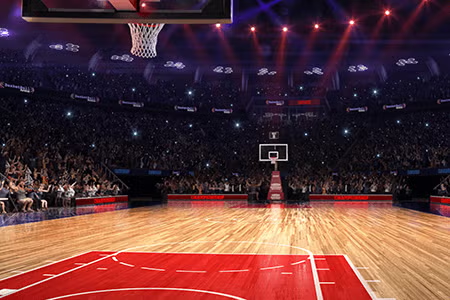A Solid Footing in Flooring
Concrete flooring: As mentioned, a common application is floor coatings. For concrete floors, interest in flexible polyaspartic systems is growing because they can be used for both waterproofing and a top color coat all-in-one on concrete surfaces with movement, such as balconies and terraces. Polyaspartic coatings have two components (polyaspartic resins and an aliphatic hardener) that are mixed together at the job site to create the coating. Contemporary waterborne and polyaspartic coatings are available with low to ultra-low VOC levels, as well as low odor attributes.
Due to its fast curing, contractors can benefit from improved productivity and faster turnaround. In many cases, within an hour or two after application, the floor can be walked on and a few hours later, light traffic or a forklift can drive across it. Reduced downtime is important for retailers, warehouses, and other commercial, institutional, or industrial buildings. This benefit also applies to parking decks and garages where leased or “pay by the hour” spaces are sold. Lost time equals lost revenue and inconvenience for users.
ADI-based polyaspartic coatings also provide excellent clarity, longevity, chemical resistance, and enhance color vividness.
Wood flooring: Whether it’s a wooden gymnasium floor or hardwood floor in your home, ADI-based PU coatings offer high quality appearance and long-lasting protection. Quick drying, low odor coatings for wood flooring (new or refinished) are made possible with ADI-based PU coatings. They help protect floors from impact, stains, heavy foot traffic, and harsh ingredients that may be contained in some floor cleaning products. Sustainable water-based one and two-component systems are available. Some of the coatings are UV-curable and harden almost instantly when cured with specialized on-site equipment.
Sports flooring: Indoor and outdoor sports arenas depend on high quality surfaces that offer an excellent combination of properties to support players’ safety and performance. PU coatings provide elastic surfaces with excellent rebound properties and slip resistance. When decorative colors and logos are used, these light-stable coatings are well suited to enhance the floor’s appearance. Stadiums and large venues often use concrete as the floor substrate. PU and polyaspartic coatings provide technology to protect and maintain the concrete, minimizing downtime so the team can remain on the field and fans can fill the stands.
Now That’s Cool
Roof Coatings: Fluid-applied roof coatings can be installed on a new roof or to re-roof an existing deck to prolong its lifespan. These systems contribute to the sustainability of the building by extending the roof’s life, limiting unnecessary roof tear-offs which can contribute to landfill waste. One or two-component PU coatings for roofs provide a unique combination of weatherability, toughness, and corrosion resistance. Aliphatic-based coatings exhibit excellent UV resistance, good color retention, and are well suited for “cool roof” solutions. Reflective roofs keep buildings and their surroundings cooler by reducing the amount of sunlight that the roof converts to heat. This reduces energy consumption in air-conditioned buildings, increases occupant comfort, and improves overall building envelope longevity.
